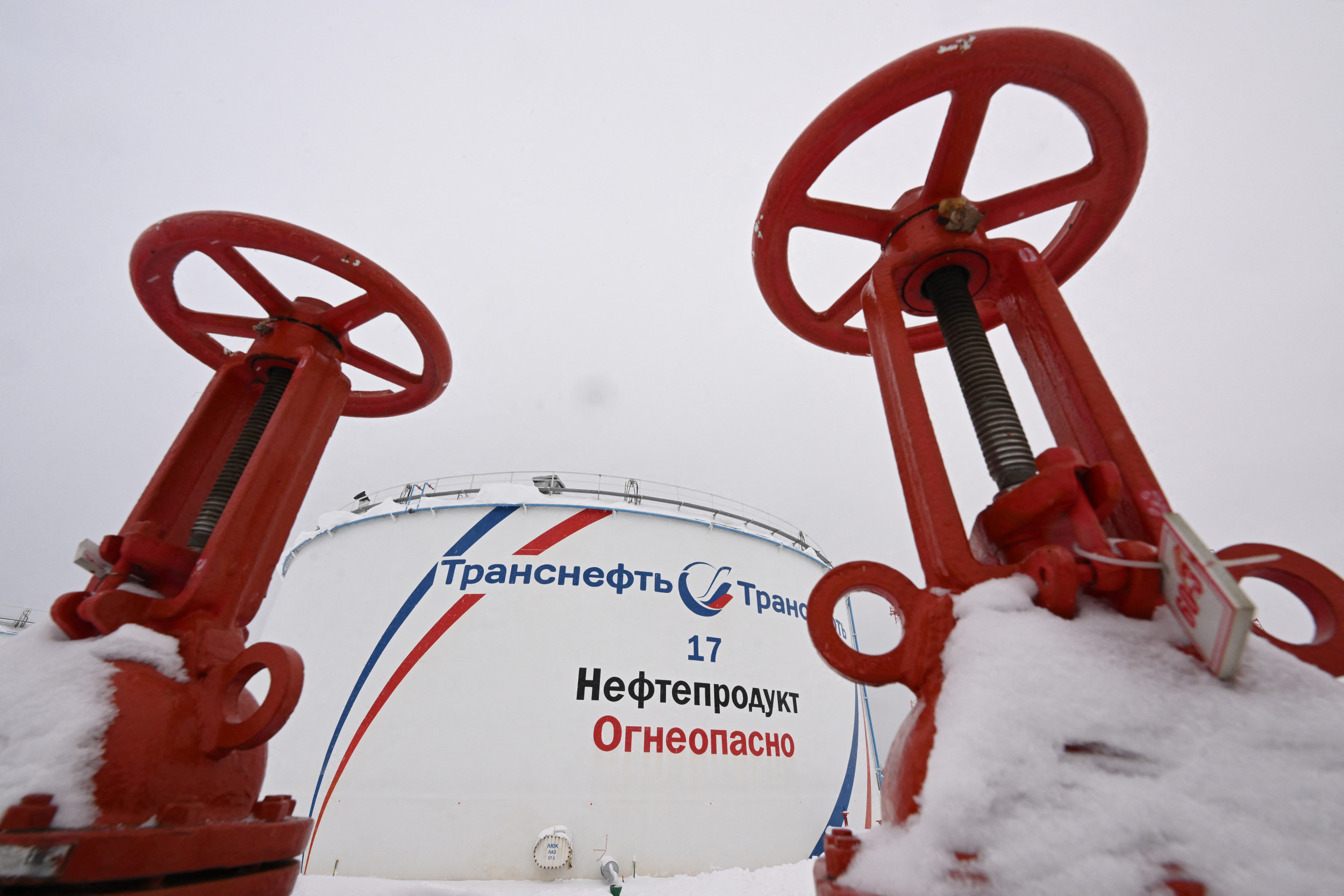Russia’s average daily production of crude oil in 2024 slumped to its lowest level in nearly two decades, according to the latest figures, which reportedly show the impact of Ukrainian drone strikes on Russian energy infrastructure.
Data from oil trade analytics platform Seala showed that crude oil production this year in Russia averaged 1,254 metric tons per day—the lowest since 2005.
Military news site Militarnyi was among the Ukrainian media outlets that cited the figures, along with data that production at oil refineries in Russia had fallen to their lowest levels since 2012 because of unscheduled repairs following the drone attacks.
Newsweek has contacted Russia’s Finance Ministry for comment by email.
NATALIA KOLESNIKOVA/Getty Images
Why It Matters
Oil is a key revenue generator for Russia, which is the world’s third largest producer of the resource, accounting for over 12 percent of global crude oil production.
That is why oil was targeted by Western sanctions that aimed to punish Russia and President Vladimir Putin for his 2022 invasion of Ukraine and choke off funds for his war machine.
These include a G7-imposed $60 price cap on a barrel of seaborne oil, which Russia has managed to evade through a so-called shadow fleet of vessels whose links to Moscow are hidden, often through shell companies.
Meanwhile, Ukraine has succeeded in hitting oil production sites in Russia with drone strikes deep inside the country but often not claiming responsibility.
What To Know
Figures from Seala showed that Russia’s daily crude production was 1,330 metric tons in 2022, dipping to 1,254 metric tons this year.
Militarnyi said this is happening amid record-low combined crude oil and gas condensate production—1,428 thousand metric tons daily.
“This was the lowest level since 2011, when production amounted to 1,424 tons per day,” it said. “At the same time, oil production fell to 1,254 thousand tons per day, which is the lowest level since 2005.”
Citing Reuters figures, The Moscow Times was among the news outlets reporting projections that Russia would process 267 million metric tons of oil this year—a drop of 8 million metric tons from 2023, the lowest level of production of the fuel since 2012.
Drone attacks on Russian refineries have meant unscheduled equipment repairs, which are made more difficult by Western sanctions on technology. Three refineries were particularly hard by Ukrainian attacks in 2024.
One was in Tuapse in the southern Krasnodar region on the Black Sea coast, a facility owned by state giant Rosneft that in January was engulfed by a huge fire, with another in July. Downtime in its primary units led to a 59.6 percent drop in production, or 5.5 million metric tons, Militarnyi reported.
The Nizhegorodnefteorgsintez refinery in Kstovo, in the Nizhny Novgorod region, was targeted in March and saw a 21.8 percent drop in production of 3.4 million metric tons. The Novoshakhtinsk facility in the Rostov region saw a drop by nearly a third (31.4 percent), or 1.5 million metric tons.
Russia has also seen a spike in retail gasoline prices, rising 11 percent in 2024 to 60.57 rubles per liter, according to state statistics agency Rosstat.
What People Are Saying
Ukrainian outlet Militarnyi reported: “As a result of the Ukrainian attacks, production at Russian oil refineries fell to a 12-year low. At the same time, oil production has fallen to a 19-year low.”
What Happens Next
Analysts have predicted that Russia’s oil industry can bounce back because of the supplies of equipment necessary for refinery repairs and the steady demand for fuel.
“If the level gained in the second half of the year is maintained, in 2025 the volume of processing may increase by 4 to 5 percent,” said Alexander Frolov of the analytical portal InfoTEK, according to The Moscow Times.
However, Russia is likely to continue its export of oil via its shadow fleet as European countries seek to curb the trade and thus funding for the Ukrainian war.















